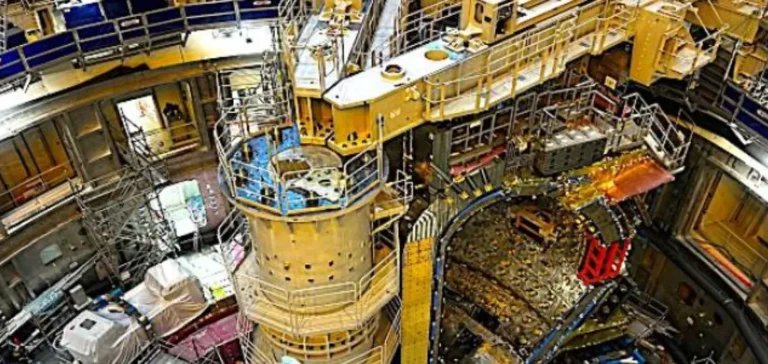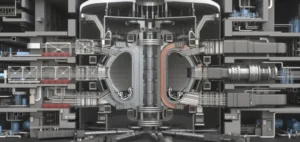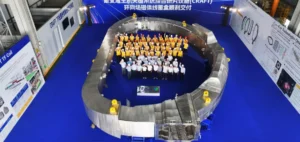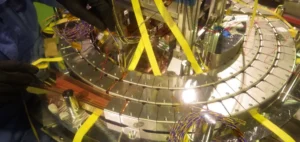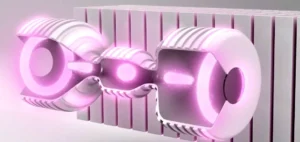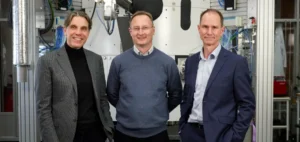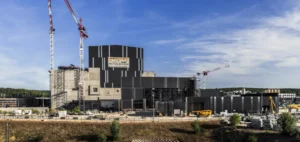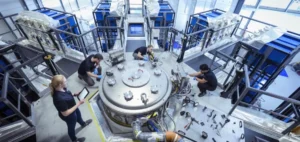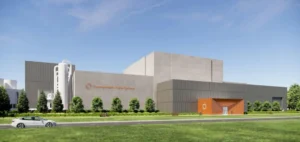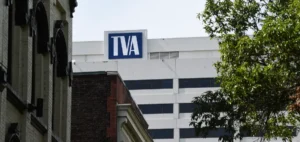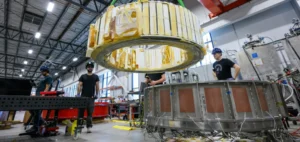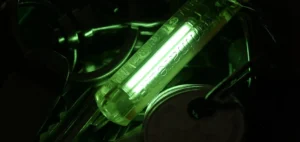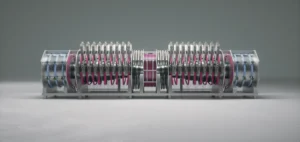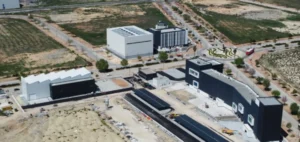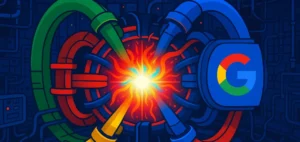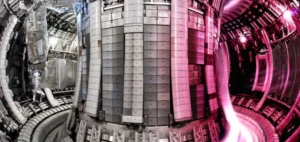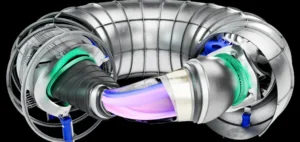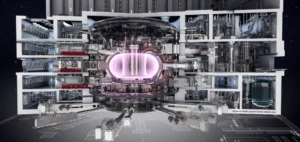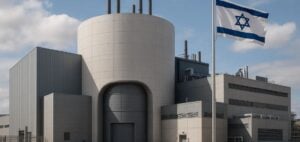Westinghouse Electric Company has signed a contract worth 180 million US dollars with ITER Organization to carry out the final assembly of the vacuum vessel for the International Thermonuclear Experimental Reactor (ITER). This chamber, also called a torus, is a crucial component of the Tokamak reactor, a hermetically sealed double-walled circular steel structure designed to contain plasma during the fusion process. Westinghouse will be responsible for simultaneously welding the nine segments of this vessel, creating a unique circular assembly. This phase represents one of ITER’s most complex and critical project stages.
A decisive stage in ITER assembly
ITER Organization, responsible for this large-scale project, brings together 35 countries including the European Union, the United States, China, India, Japan, South Korea, and Russia. The European Union finances about 50% of construction costs, with the remaining balance equally shared among the other six members. Currently under construction in Cadarache, southern France, ITER aims to demonstrate the technical feasibility of nuclear fusion as a viable large-scale energy source. ITER’s ultimate goal is to generate fusion power of 500 megawatts (MW) for at least 400 seconds, with an initial plasma heating input of 50 MW.
The project’s original timeline anticipated initial experimentation in 2018, but the ITER council pushed back this target to 2025 in 2016. A revised schedule announced last June now targets 2035 for a scientifically and technically robust first operational phase. This phase will include deuterium-deuterium fusion tests before achieving full magnetic and plasma device operation. ITER does not, however, foresee electrical power production for the grid at this experimental stage.
Westinghouse confirms historical collaboration
For over ten years, Westinghouse Electric Company has been involved in the ITER project, notably participating in manufacturing five of the nine vacuum vessel segments as part of the AMW consortium, in partnership with Italian companies Ansaldo Nucleare and Walter Tosto. During this period, Westinghouse developed advanced techniques to meet ITER’s high-quality requirements.
ITER Organization Director-General Pietro Barabaschi indicated that Westinghouse’s experience in nuclear facility design and construction was a crucial asset for successfully completing this complex stage. Meanwhile, Westinghouse Interim CEO Dan Sumner expressed his teams’ determination to leverage their expertise in this major international project, aimed at opening new possibilities in the energy sector.


